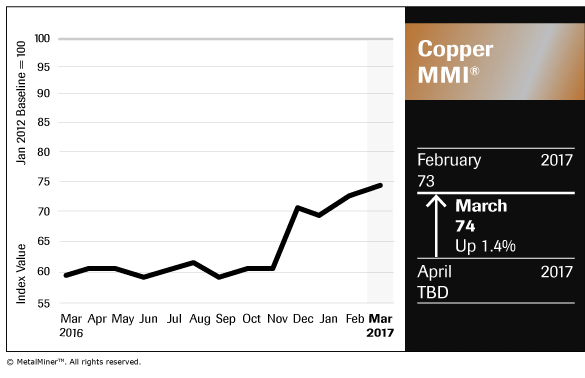Copper prices remained supported in February, trading in the ballpark of $6,000 per metric ton as a return to production at two top mines, which are combined responsible for some 8% of global output, looks increasingly doubtful in the near term.
Escondida Mine
A strike at the Escondida in Chile, the world’s largest copper mine, appeared far from ending during February. The strike increasingly turned more violent as protesters blocked roads and battled police. The events reflect the increasing bitterness and division between the two sides, as positions still appear to be far apart after almost four weeks of strike. Key differences include disagreement over changes to shift patterns and the level of benefits new workers receive.
Grasberg Mine
Meanwhile, Freeport-McMoran (NYSE:FCX) is under a concentrate export ban as it negotiates a new operating license from the government of Indonesia. Having limited storage capacity, the company will be forced to drastically cut output if Indonesia doesn’t give the company an export license to send material to its local smelter for processing.

In late February, the company announced that it sees “no returning to business as usual,” as the miner cut output and laid off workers. Copper concentrate production at the mine has been stopped since Feb. 11, and ore output is being limited to stockpiling for future processing.
In a memo, the company stated that during February it revised its operating plans, slowed its underground expansion and announced plans to drastically reduce manpower levels in an effort to cut costs as the company needs to survive while it works with the government to achieve a mutually viable solution to resume exports. So far, that agreement doesn’t seem close to coming together in the near term.
This year, there will be other temporary suspensions at smaller copper mines such at El Soldado mine in Chile. In addition, some major contract negotiations in large mines are due this year.
What This Means For Metal Buyers
Copper prices might look expensive compared to what they were just three months ago, however sentiment in the industrial metals complex remains quite bullish and current supply issues could turn into large deficits if stoppages and disruptions are prolonged. It’s seems early to call for an end on copper’s bull market.
